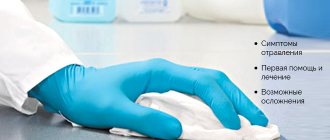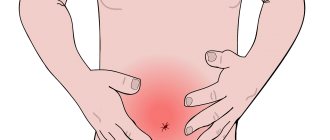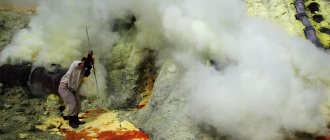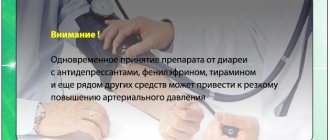Household poisoning with dichloroethane is rare in medical practice, since this substance cannot be purchased in a regular store. Basically, such intoxication occurs under production conditions, since this poison is used to produce various substances.
Use dichloroethane or ethylene chloride:
- for the production of polyethylene, thiokol, varnishes and paints, as well as substances for their removal,
- as a solvent,
- as part of degreasers and furniture cleaning products,
- as an anesthetic in medicine,
- as chemical weapons during hostilities,
- as an adhesive for plexiglass,
- in the fight against certain pests (for example, the Colorado potato beetle), etc.
Due to the wide scope of use of the toxic substance in various industries, no one is immune from symptoms caused by dichloroethane poisoning.
What is dichloroethane
This is an organic substance containing chlorine. In terms of physical properties, dichloroethane is an ordinary colorless liquid with a sweetish odor.
What is this chemical compound and why is it famous? Features of dichloroethane are as follows:
- highly soluble in most organic solvents (alcohol, petroleum hydrocarbons, ether), but not in water;
- it is a potent narcotic;
- flammable;
- boiling point of dichloroethane 83.5 ºC;
- evaporates quickly and easily, which increases the likelihood of poisoning;
- dichloroethane is an excellent solvent that is successfully used to accelerate certain chemical reactions;
- resistant to many acids and alkalis;
- is a strong carcinogen - with regular inhalation of vapors it accumulates in the body and leads to the formation of tumors.
The chemical formula of dichloroethane is C2H4Cl2.
Differential diagnosis
DCE poisoning should be differentiated from acute alcohol intoxication, poisoning with ethylene glycol, toadstool, as well as Botkin's disease (epidemic hepatitis) and other acute liver diseases.
Laboratory diagnostics is carried out by determining DCE in biological media of the body (blood, urine, peritoneal fluid) using gas chromatography.
The main pathomorphological changes appear in the form of multiple pinpoint and spotty hemorrhages under the pleura, epicardium, endocardium, and mucous membrane of the gastrointestinal tract. When opening the cavities and organs of the deceased, the characteristic smell of EDC is determined.
Methods of obtaining
Dichloroethane was first synthesized through simple chemical reactions by Dutch scientists in 1795. By combining chlorine with ethylene, chemists were able to discover a completely new compound with properties unusual for that time. Many years have passed since then, but ethylene chloride is still sometimes called “the oil or liquid of the Dutch chemists.”
Today, dichloroethane is produced on an industrial scale. There are several ways to synthesize it.
- The first method in history for obtaining a substance has remained virtually unchanged. Today, in many countries, dichloroethane is produced by combining chlorine and ethylene under the influence of a catalyst (accelerator) of a chemical reaction - ferric chloride. The result is almost 100% pure product. The reaction temperature is 20–80 ºC.
- The second reaction is similar to the first, but it occurs at a higher temperature - 95–130 ºC under low pressure. This method uses more ethylene.
- Another method for producing dichloroethane is the combination of ethylene and hydrochloric acid in the presence of oxygen, which is also called oxidation. In this reaction, the catalyst is copper chloride.
- In the chemical industry, there is another method - the reaction between chlorine and ethylene in liquid dichloroethane, which is the medium for their interaction. All this takes place at 20–30 ºC.
The hazard class of dichloroethane is the second, which means a high degree and if it gets into an open area, it will take at least 30 years to completely clean the environment from this chemical compound.
Many countries around the world are engaged in the production of ethylene chloride; they produce at least 15 million tons of the substance per year, so they are constantly inventing new methods for its synthesis.
Treatment in hospital
The antidote for dichloroethane poisoning is “Acetylcysteine” - you need to inject 100 ml of a 5% solution into the body. You can also give the victim rheopolyglucin and a glucose solution with insulin.
In the hospital, after the administration of the antidote, treatment is only symptomatic. How do they help the victim?
- Provide oxygen inhalation.
- Plasma-substituting solutions are administered.
- Unithiol, lipoic acid and cytochrome are used, vitamins B and E are prescribed.
- If necessary, connect to an artificial kidney machine.
If primary signs of poisoning appear, it is recommended to call an ambulance. Before doctors arrive, you need to ventilate the room in which the victim is located. To prevent the condition from worsening, he should be changed.
After the first symptoms of poisoning appear, you need to call an ambulance. A full examination and treatment is prescribed by a toxicologist. After admission, the patient is undressed and clothes are removed so that evaporation and inhalation of vapors do not occur and do not complicate this situation. Treatment of such patients takes a lot of time and long-term rehabilitation.
Taking activated carbon as a sorbent neutralizes toxic substances, giving fast-acting laxatives. On the recommendation of doctors, if DCE poisoning occurs, you can drink jelly or jelly to coat the stomach.
Treatment of the kidneys begins with early (within one day) hemodialysis; flushing the kidneys removes intoxication in the blood. Vitamins B and C, insulin with glucose, and glucocorticoids will help restore the liver.
Treatment of DCE poisoning includes the following measures.
For accelerated detoxification, gastric lavage is performed 2-3 times at intervals of 1-2 hours using 15-20 liters of water, followed by the introduction of 150-250 ml of vaseline oil.
In case of pronounced clinical manifestations of intoxication and determination of the toxic concentration of DCE in the blood, early hemodialysis is indicated, which should be carried out for at least 6-10 hours.
Peritoneal dialysis surgery is indicated during the first 24 hours after poisoning. Dialysis can last 18-20 hours with a change of 20-25 portions of the dialysate solution, depending on the data of a toxicological study of the peritoneal fluid.
Peritoneal dialysis is carried out with standard electrolyte solutions with a pH of 7.6-8.4, since the toxic metabolites of DCE have acidic properties. It is possible to carry out lipid dialysis with the addition of fat imulsions.
The operation of detoxification hemosorption also provides a high degree of detoxification in case of DCE poisoning. 2-3 sessions are carried out under the control of a toxicological blood test, the clearance of DCE is 60-120 ml/min. Subsequently, with the development of acute hepatic-renal failure, program hemodialysis is performed.
Forced diuresis as a method of detoxification has no independent value and should be carried out in combination with other methods while maintaining normal blood pressure levels.
Specific pharmacotherapy: acetylcysteine - 20% solution 150 mg/kg with 5% glucose solution (1 l). Then 50 mg/kg intravenously 4 times a day for 3 days. It is carried out after the end of artificial detoxification.
Antioxidant therapy
Taking into account the damaging effect of free radicals formed during the metabolism of DCE, the administration of 1-2 ml of vitamin E (a-tocopherol) 3-4 times a day intramuscularly, 5 ml of a 5% solution of unithiol 3-4 times a day is indicated.
For the prevention and treatment of exotoxic shock, see Chapter 1, Section 3. Infusion of plasma-substituting solutions of polyglucin, albumin, etc., 10-15% glucose solution with insulin, 4-8% sodium bicarbonate solution is carried out. The volume of infusion therapy is up to 10-12 l/day. The use of up to 1000 mg/day of prednisolone is indicated.
The administration of proteolytic enzymes (trasylol, contrical) at a dose of 200,000-500,000 units/day intravenously improves hemodynamics and reduces fatty degeneration and necrosis of hepatocytes.
Patients who have suffered poisoning, complicated by moderate and severe toxic liver dystrophy, should be monitored for 1-2 years.
Clinical Case No. 36
Application
Dichloroethane is an organic chemical that negatively affects the human body, but at the same time many household products cannot be obtained without it.
Where is dichloroethane used?
- Its main role in the chemical industry is the basis for the production of vinyl chloride. That is, it is from ethylene chloride that the familiar and affordable polyethylene is obtained, without which modern life cannot be imagined. Bags, vinyl records, suspended ceilings, artificial leather, washable wallpaper, furniture edges, wires and cables are all the result of this chemical reaction between dichloroethane and other substances.
- Vinyl chloride is necessary for the synthesis of the simplest dihydric alcohol - ethylene glycol.
- Dichloroethane is used in the production of the rubber-like substance thiokol, which is used to make rubber.
- This is an ideal solvent.
- It is used to make varnishes and paints, as well as means for removing them.
- It is included in surface degreasing agents and furniture polishing liquids.
- Dichloroethane has good disinfecting properties, so it is used to treat grain and its storage facilities.
- Used to disinfect soil under vineyards.
- In medicine it is used as an anesthetic.
- The substance has successfully proven itself in the fight against the Colorado potato beetle.
- Dichloroethane is used in everyday life; it is used to process plexiglass for gluing, plastic and other things.
- Thanks to dichloroethane, it is possible to degrease woolen products, and thoroughly treat the leather before the tanning process.
- It is added during the production of vegetable oil as an extracting component.
- This is the initial product in the preparation of many chemical compounds, such as ethers, amines, and alcohols.
- Dichloroethane is used to treat surfaces against fungus.
- Vinyl chloride not only brings benefits - it is part of the toxic substances that are sprayed on the enemy in wartime.
The chemical industry cannot do without this compound, because it is difficult to imagine the modern world without it. When is dichloroethane poisoning possible? In what cases does it happen?
Prevention of intoxication
The main preventive measures are:
- compliance with safety rules when working with solutions containing organochlorine compounds;
- thorough ventilation of areas where there is contact with hazardous liquids;
- safe storage of containers with the substance in places inaccessible to children.
Before using EDC as an adhesive or in household chemicals, you should wear protective gloves and a disposable mask. You should try to carry out the process in such a way that your head is not directly above the source of fumes.
Causes of poisoning
The narcotic effect of dichloroethane is due to its effect on the nervous system. Poisoning is possible by ingesting the substance or by inhaling its vapors. But how can this happen if the connection is considered dangerous and therefore closely monitored? There are several possible reasons why dichloroethane in vinyl chloride enters the human body.
- It will easily and quickly enter the upper respiratory tract if storage rules are violated at work or if safety precautions are not followed when working with it. The permissible concentration of vapors in the air is no more than 0.01%.
- If you use products with dichloroethane at home to clean clothes in a poorly ventilated area, the poisonous effect can be lightning fast.
- Often people deliberately try it as a narcotic substance and take it internally to obtain a relaxing effect.
- Accidental poisoning, possibly due to ignorance, for example, when children left without parental supervision drank liquid vinyl chloride.
The lethal dose of dichloroethane is only 20 ml.
Preventive measures
To avoid trouble, you must adhere to basic safety rules and remember that dichloroethane is highly toxic. Therefore, in industrial premises it is enough to install exhaust ventilation, and at home it is enough to open the windows when using household chemicals. Also, do not forget about special clothing or rubber gloves; after everything, do not forget to rinse everything off with water and, if necessary, take a shower. When working with such substances, stay away from the source of fire. If your profession involves constant contact with harmful substances, be sure to undergo a medical examination once a year.
- Author: Elena
Rate this article:
- 5
- 4
- 3
- 2
- 1
(0 votes, average: 0 out of 5)
Share with your friends!
Symptoms of poisoning
When dichloroethane enters the body through the digestive system, it is quickly absorbed in the stomach in the first 3–4 hours. Alcohol and fatty foods speed up this process. After 6–8 hours, 70% of the toxic substance is found in tissues and internal organs rich in fats:
- liver;
- brain;
- adrenal glands;
- fat layer of the abdominal cavity.
In the liver, dichloroethane is converted to chloroethanol (another equally toxic substance).
Symptoms of inhalation poisoning
Dichloroethane vapor poisoning occurs when the substances are inhaled or come into contact with the skin. Signs appear after several hours and are not always recognized in a timely manner.
- When the poison gets on the skin, local redness and swelling occurs in areas of the body, which subsequently leads to the development of dermatitis.
- When ethylene chloride is inhaled into the body, symptoms occur at the end of the first or on the second day and more often resemble a mild course of a viral infection - general malaise, weakness, runny nose, lacrimation, headache and dizziness occur, body temperature rises to 39 ºC.
- In severe cases, a state of stunning occurs, which ends in coma.
- There is paralysis of the respiratory center and various types of heart rhythm disturbances.
- After three days of relative well-being (with a mild course), symptoms of disruption of the digestive system appear - nausea, vomiting, loose stools, abdominal pain and enlarged liver.
- In case of inhalation poisoning with dichloroethane, jaundice develops and the amount of urine excreted by the kidneys decreases.
Symptoms of oral poisoning
What happens if you drink dichloroethane? The first mild manifestations of poisoning occur just a few minutes after consuming the chemical compound.
- Nausea and repeated vomiting mixed with blood occur.
- Pain appears in the stomach, release of a large amount of saliva, and severe weakness.
- A person is worried about loose stool - it is liquid, flaky, with the smell of ethylene chloride.
- In the clinical picture of dichloroethane poisoning, the leading symptoms are agitation, a sweet taste in the mouth, convulsions and severe cramping pain in the abdomen.
- Numerous nasal and gastric bleeding and bleeding from the injection sites occur.
- The heartbeat quickens, extrasystoles and other heart rhythm disturbances appear.
- Already on the first day after dichloroethane intoxication, 60–80% of victims develop shock.
- Approximately on the fifth day of acute poisoning, an enlarged liver and its sharp pain upon examination, yellowing of the skin and sclera, and kidney damage are noted.
The most severe symptoms are experienced by young children, patients with diabetes, and people with chronic liver and kidney diseases. If poison is taken in large quantities, death can occur from paralysis of the respiratory muscles in the first hours.
In chronic alcoholics, some of the symptoms of dichloroethane poisoning are convulsions, agitation, alcohol withdrawal syndrome, and muscle twitching.
Possible consequences
If you refuse professional help or do not provide it in a timely manner, chronic diseases of the liver, kidneys, and cardiovascular system may develop. These pathologies cannot be corrected. In very severe cases, death can occur.
Have you ever had dichloroethane poisoning?
- Yes it was
- No, it was not
- Now there are symptoms of intoxication
ResultsPoll Options are limited because JavaScript is disabled in your browser.
- No, there were no 71%, 172 votes 172 votes 71% 172 votes - 71% of all votes
- Currently there are symptoms of intoxication 15%, 37 votes 37 votes 15% 37 votes - 15% of all votes
- Yes, there were 14%, 34 votes 34 votes 14% 34 votes - 14% of all votes
Total votes: 243 08/23/2017 You or from your IP have already voted.
- Yes it was
- No, it was not
- Now there are symptoms of intoxication
You or from your IP have already voted. results
First aid
If you suspect dichloroethane poisoning, the first thing to do is take the patient to the nearest intensive care unit or call an ambulance.
What first aid can be provided to the victim?
- If a toxic substance gets on your skin, you need to wash it thoroughly with soap and water without rubbing to prevent further penetration of the poison into the body.
- First aid for dichloroethane vapor poisoning is to take the person out into the open air.
- If a chemical compound is ingested through the mouth, first aid is to inject about 200 ml of petroleum jelly through a tube into the stomach, which can bind the poison. Then you need to rinse the stomach to clean water, and then give the victim activated charcoal.
Occupational therapy
For dichloroethane intoxication, the antidote is Acetylcysteine, which doctors administer to the victim in the form of a 5% solution. Additionally, to maintain normal functioning of the body, you can use Reopoliglucin, a glucose solution with insulin.
After Acetylcysteine is administered, therapy is carried out only according to symptoms and consists of the following:
- ensuring full access of oxygen through inhalation,
- administration of plasma replacement solutions,
- the use of lipoic acid, Unitol, cytochrome, vitamins B and E,
- use of an artificial kidney apparatus in case of failure of one’s own organs.
Features of work
It should be said right away that gluing plastic is very difficult. It is much easier to connect materials such as ceramics, metal or even glass using an adhesive mixture. The whole problem with polymer substances when gluing them is that they have a fairly high chemical inertness. In other words, such materials simply do not form bonds. Because of this, to glue polymers you need to have a special composition. In addition, for each group of such substances it is necessary to use a different adhesive composition. For example, dichloroethane cannot be used to glue polyethylene together.
In general, all adhesives are divided into two groups: liquid with a water base and liquid with a solvent base. The principle of operation of solvent adhesive is that after its application, the solvent base completely evaporates, and the remaining elements harden, connecting the material. However, only porous raw materials can be glued in this way; using it for a sealed base is completely useless.
Where is it used?
Dichloroethane is used for industrial purposes and is not available for free sale.
Produced in large quantities. It is used to make PVC, from which various materials are made: linoleum, artificial leather, film for suspended ceilings, furniture edges, profiles for windows and doors. Included in solvents, adhesives, stain removers and other household chemicals.
EDC is used for the extraction of oils, fats, resins, paraffins and waxes, and as an insecticide for soil disinfection.
Aircraft modellers like to glue parts together with dichloroethane. It perfectly dissolves various types of plastics and plexiglass. After EDC hardens, a strong monolithic joint is obtained.
Many doctors classify dichloroethane as a drug that ranks first among halogen derivatives in terms of its potency.
Other uses of ethylene dichloride
Ethylene dichloroethane is used to produce substances such as ethylene glycol, ethylenediamine, and polysulfide rubbers. If we talk about such an industry as the paint and varnish industry, then here it is widely used as the main reagent for the production of paint solvents. Agriculture also actively uses this composition as an insecticide for the treatment of grain crops, vineyards, soil, and grain storage. It is also actively used to control pests such as the Colorado potato beetle and several other types of insects.
If we talk about the construction industry, then here it is used as a solvent for plastics, fats, oils, wax, etc. Due to its properties, the substance is capable of not only dissolving, but also gluing plastic. Dichloroethane is used when working with facing materials used for building structures. It’s worth bringing some clarity here. Gluing any items related to kitchen utensils is strictly prohibited. The reagent can also be used in conjunction with an element such as plexiglass. Dichloroethane is used to repair parts made from this composition. It is capable of removing cracks and chips from the surface of these elements.
EDC for plastics
By itself, this chemical reagent bears very little resemblance to an adhesive composition. It has a pungent odor, is volatile, and also easily dissolves in alcohol or fats. Small containers containing EDC are commercially available. Volume 30 ml. Since the composition itself is aggressive and dissolves plastic, it is necessary to properly prepare the adhesive composition.
To prepare glue, you need to dissolve a certain amount of polymer substance in liquid. Most often it is about 2% plexiglass or 20% polystyrene. In order to further reduce the aggressiveness of the composition with a dichloroethane base, it is necessary to dissolve in it a little of the material that you plan to glue.










